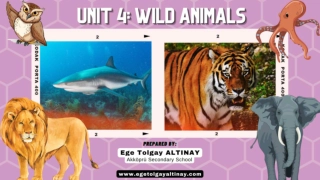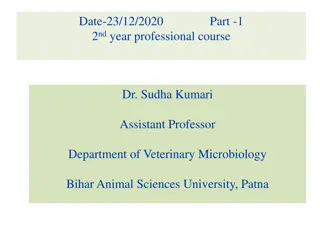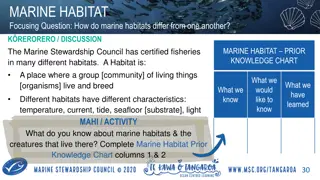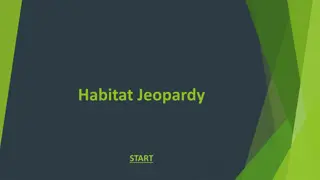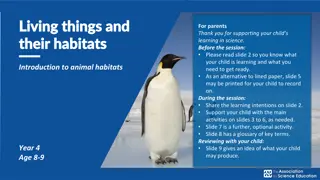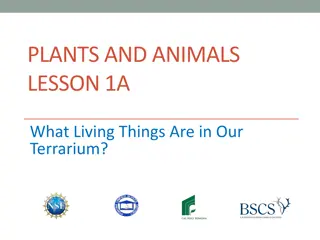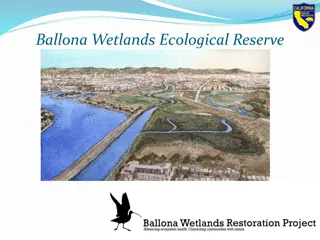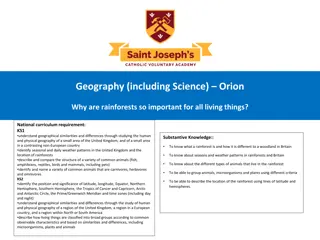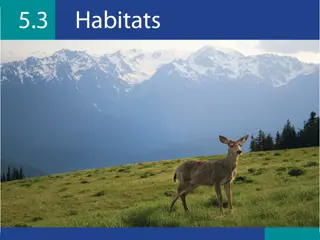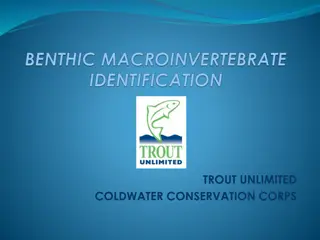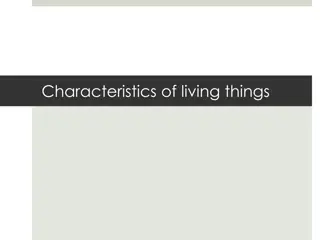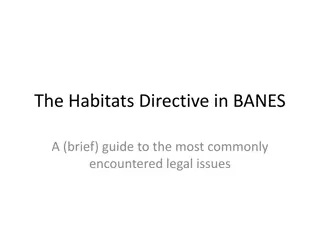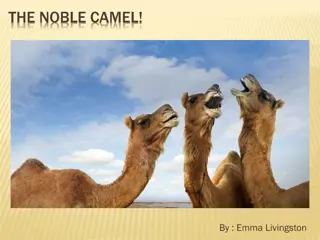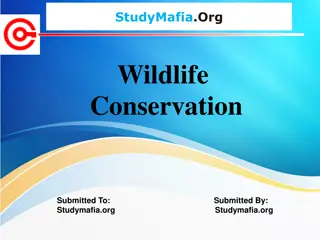Exploring Living Things and Habitats in Year 4
Year 4 students will learn about how animals are adapted to their habitats, the elements of a habitat, classification of living things, food chains, seasonal changes in environments, and human impacts on habitats. Various activities and resources are provided to enhance learning.
Download Presentation

Please find below an Image/Link to download the presentation.
The content on the website is provided AS IS for your information and personal use only. It may not be sold, licensed, or shared on other websites without obtaining consent from the author. Download presentation by click this link. If you encounter any issues during the download, it is possible that the publisher has removed the file from their server.
E N D
Presentation Transcript
Year 4: Living things Year 4: Living things and their habitats and their habitats This topic overview is based on the PLAN knowledge matrix (for England). Please use link: https://www.planassessmen t.com/living-things-y4 The matrix includes: National Curriculum learning objectives Key learning Key vocabulary Common misconceptions Possible activities & evidence Topic overview for teachers Age 8-9
Year 4 Living things and their habitats Topic Key Learning Animals live in a habitat which provides an environment to which they are suited. A habitat provides animals with water, food and shelter. Each habitat has different conditions such as the amount of light, the temperature and the amount of moisture. Animals are adapted to live in their habitats. page An introduction to animal habitats 4 Local habitats: woodland and garden habitats 5 A habitat provides animals, plants and other living things with food and shelter. A small place where living things can survive is often called a micro- habitat, for example under a log. Each micro-habitat has different conditions such as the amount of light, the temperature and the amount of moisture. Making branching keys and classifying small woodland animals Living things can be grouped or classified in different ways according to their features. Branching keys are useful for classifying things, using descriptions of features. 6 2
Year 4 Living things and their habitats Topic Key Learning A food chain shows the links between different living things and where they get their energy from. Living things can be classified as producers or consumers according to their place in the food chain. A predator is an animal that feeds on other animals (its prey). Animals can be described as carnivores, herbivores or omnivores. page Food chains in a woodland habitat 7 Changing environments: seasonal changes and changes due to human activity. Environments change with the seasons. Living things may change their behaviour in different seasons. Some animals may hibernate. Humans can cause the environment to change. This can be in a good way (i.e. positive human impact, such as setting up nature reserves) or in a bad way (i.e. negative human impact, such as littering). 8 3
Living things and their habitats Living things and their habitats An introduction to animal habitats Logo for section to sit inside roundel Key Learning Animals live in a habitat which provides an environment to which they are suited. A habitat provides animals with water, food and shelter. Each habitat has different conditions such as the amount of light, the temperature and the amount of moisture. Animals are adapted to live in their habitats. Activities and Websites Exploring prior knowledge about habitats. https://www.bbc.co.uk/teach/class-clips-video/science-ks1- ks2-wonders-of-nature-polar-bears-in-their- habitat/z73ygwx Looking at owls and foxes in different habitats and their adaptations. https://www.bbc.co.uk/bitesize/clips/zv7w2hv https://www.bbc.co.uk/teach/class-clips-video/science-ks2- -ks3-how-animals-have-adapted/z4y76v4 Making a fact file about owls and foxes. Optional activity to extend the fact file for more animals in hot deserts or the Arctic (see lesson page 7). I can Describe how some animals are adapted to live in an Arctic habitat or a hot desert habitat. 4
Living things and their habitats Living things and their habitats Local habitats: woodland and gardens Logo for section to sit inside roundel Key Learning A habitat provides animals, plants and other living things with food and shelter. A small place where living things can survive is often called a micro-habitat, for example under a log. Activities and Websites Exploring prior knowledge of woodland and garden habitats. https://www.nhm.ac.uk/discover/earthworm-heroes.html https://www.bbc.co.uk/teach/class-clips-video/science-ks1- ks2-fallen-leaves-fungi-slime-molds/z7cb47h Each micro-habitat has different conditions such as the amount of light, the temperature and the amount of moisture. Discussing micro-habitats. https://www.bbc.co.uk/programmes/p003lc9k https://www.bbc.co.uk/programmes/p003kmh2 I can Conducting a garden habitat survey. Describe a garden or woodland habitat. There are alternative activities if it is not possible to go outside (see lesson page 5 & 7). Identify some of the living things found in a garden or woodland habitat. 5
Living things and their habitats Living things and their habitats Making branching keys and classifying minibeasts Logo for section to sit inside roundel Key Learning Living things can be grouped or classified in different ways according to their features. Branching keys are useful for classifying things, using descriptions of features. Activities and Websites Investigating branching keys with sweets. www.saps.org.uk/attachments/article/1377/SA PS%20book%205%20- %20Grouping%20and%20Classification%20- %202016.pdf Exploring animal features odd one out. Identifying minibeasts using a branching key. I can Make a branching key to classify a group of objects. Identify minibeasts using a branching key. Option to extend by making a branching key for four or five animals. 6
Living things and their habitats Living things and their habitats Food chains in a woodland habitat Logo for section to sit inside roundel Activities and Websites Exploring prior knowledge about how animals feed. Key Learning A food chain shows the links between different living things and where they get their energy from. Living things can be classified as producers or consumers according to their place in the food chain. A predator is an animal that feeds on other animals (its prey). Animals can be described as carnivores, herbivores or omnivores. https://www.bbc.co.uk/bitesize/clips/z9nhfg8 Understanding and describing a food chain. https://www.bbc.co.uk/bitesize/clips/zjshfg8 Playing BBC bitesize food chain game. https://www.bbc.co.uk/bitesize/topics/zbnnb9q/art icles/zsphrwx Drawing and describing four food chains. Optional activity to explore the relationship between ants, tiger beetles and parasitic wasps. (See lesson page 7.) I can Draw food chains for woodland plants and animals. Describe the relationship between predators and their prey. 7
Living things and their habitats Living things and their habitats Changing environments: seasonal changes and changes due to human activity Logo for section to sit inside roundel Activities and Websites Exploring prior knowledge about hedgehogs. Looking at hedgehog behaviour and diet throughout the year. Key Learning Environments change with the seasons. Living things may change their behaviour in different seasons. Some animals may hibernate. Humans can cause the environment to change. This can be in a good way or in a bad way. There can be a positive or a negative human impact. https://www.bbc.co.uk/bitesize/clips/z284d2p Finding out about organisations which campaign for the protection of hedgehogs. https://ptes.org/campaigns/hedgehogs/ https://www.britishhedgehogs.org.uk/ Designing a campaign poster. Optional activity to find out about other threatened habitats and protected animals (see lesson page 7). I can Describe how hedgehogs change their behaviour in different seasons. Make a campaign poster for helping to protect hedgehogs and their habitats. 8
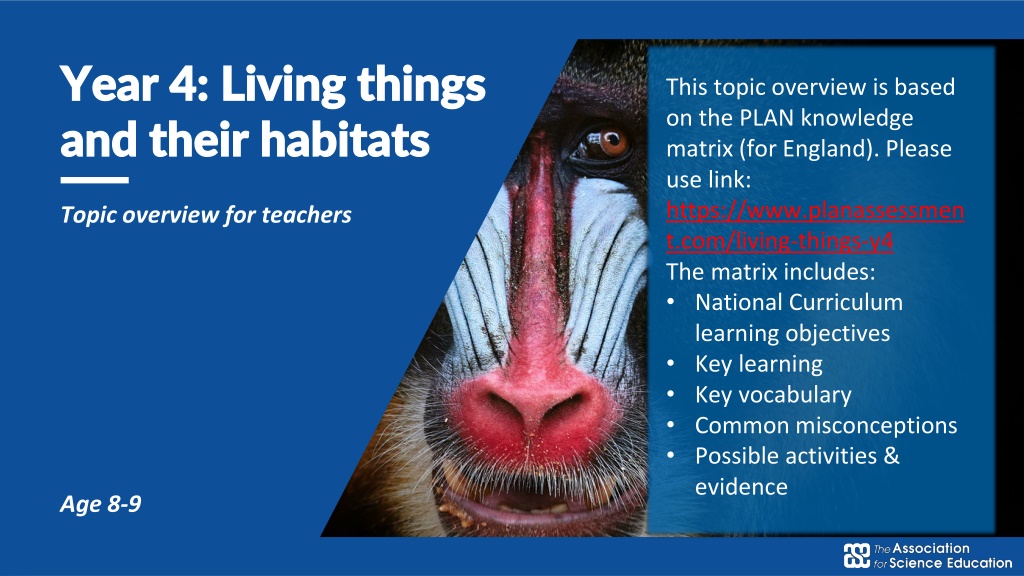

![get⚡[PDF]❤ Building Habitats on the Moon: Engineering Approaches to Lunar Settle](/thumb/21624/get-pdf-building-habitats-on-the-moon-engineering-approaches-to-lunar-settle.jpg)
